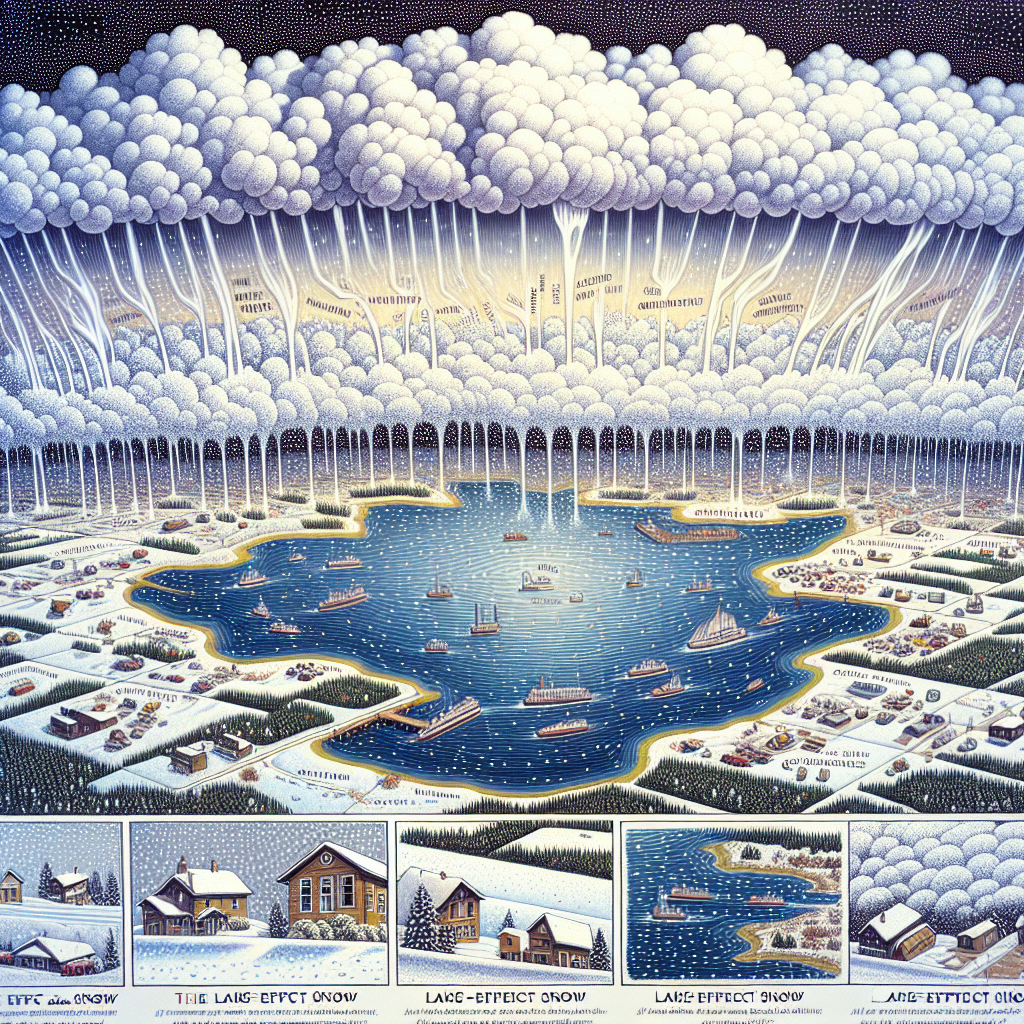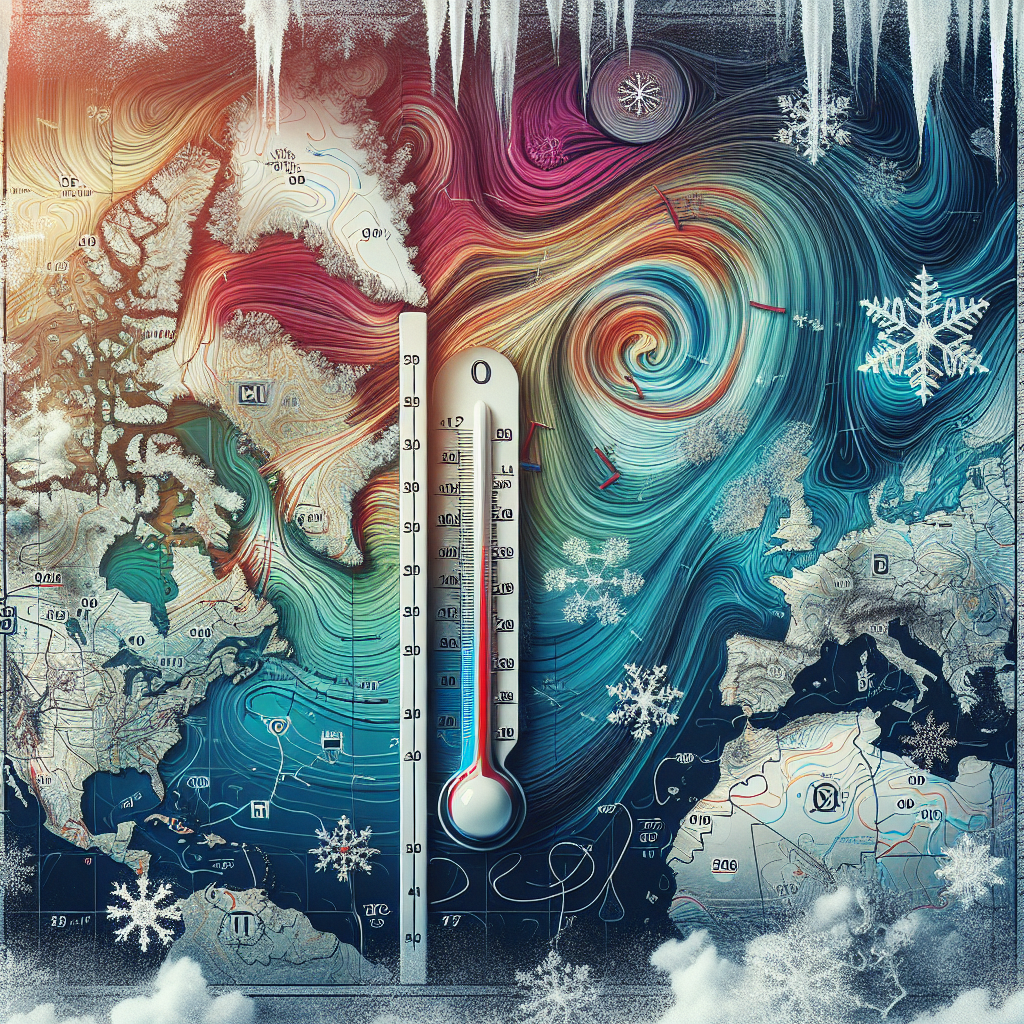Understanding Lake-Effect Snow
Lake-effect snow is a meteorological phenomenon that occurs in proximity to large bodies of water, primarily lakes. This unique weather event significantly impacts local climates, especially in regions near the Great Lakes. When cold air moves over the relatively warmer waters of inland lakes, it picks up moisture that later falls as precipitation, resulting in localized heavy snowfall.
How Lake-Effect Snow Forms
The formation of lake-effect snow involves a few critical meteorological conditions. First, a body of cold air, often a cold front, moves over the warm waters of the lake. The warmth from the lake causes evaporation, filling the air with moisture. As the air rises, it cools down, leading to condensation and eventually precipitation in the form of snow. The intensity and amount of lake-effect snow can vary significantly based on temperature differences between the lake surface and the air above, wind direction, and lake size.
Geographic Factors
The Great Lakes are especially prone to lake-effect snow due to their size and the prevailing wind patterns. Lake Superior, Lake Michigan, Lake Erie, and Lake Ontario often create conditions conducive to significant snowfall. Regions downwind of these lakes, particularly in New York, Michigan, and Ohio, experience the brunt of these snowstorms. Apart from the Great Lakes, smaller lakes can also contribute to localized snow effects, although not as dramatically.
Temperature Variance
One critical factor in the formation of lake-effect snow is the temperature differential between the lake water and the air above it. For optimal lake-effect snow to occur, the water temperature should be significantly warmer than the surrounding air, typically at least 13°F (7°C) warmer. When this temperature difference is achieved, the potential for heavy snowfall increases dramatically, leading to conditions that can be both beautiful and hazardous.
The Role of Wind Direction
Wind direction plays a crucial role in the distribution of lake-effect snow. Winds blowing from the west or northwest are particularly effective in transporting moisture from the lakes toward populated inland areas. As the snow-laden clouds move inland, meteorological factors, such as orographic lift — where air is forced to rise over terrain — can further enhance snowfall, sometimes resulting in snow belts, which are areas that receive significantly higher amounts of snow.
Snowfall Intensity and Duration
Lake-effect snowstorms can vary widely in their intensity and duration. Some events might result in a light dusting, while others can produce several feet of snow in a short period. Snowfall rates during these storms can exceed 2-3 inches per hour in extreme cases, creating dangerous conditions for drivers and challenging those responsible for snow cleanup.
Economic Impact on Local Communities
The economic implications of lake-effect snow can be profound. While the snow may benefit winter tourism, encouraging activities like skiing and snowboarding, it can also cause severe disruptions. Unexpected heavy snowfall can lead to hazardous travel conditions, closure of businesses, and significant costs associated with snow removal efforts. For communities heavily reliant on tourism, prolonged periods of heavy snowfall can either be a boon or a burden, depending on whether the snowfall aligns with tourist seasons.
Infrastructure and Preparedness
Communities affected by lake-effect snow must implement robust infrastructure and preparedness strategies. This includes snow removal services, road maintenance, and emergency services equipped to handle severe winter weather. Proactive planning involves ensuring adequate staffing for snow removal and establishing communication protocols to inform residents about hazardous conditions and road closures.
Environmental Considerations
While lake-effect snow is primarily regarded from a meteorological and economic perspective, it also has environmental implications. Enhanced snowfall can lead to increased snowmelt in the spring, affecting local water systems and potentially leading to flooding in downstream areas. Additionally, the snowpack formed by lake-effect snow can provide much-needed moisture for local ecosystems but may disrupt wildlife habitats if it occurs too abruptly or in excessive amounts.
Climate Change and Lake-Effect Snow
In the context of climate change, the dynamics of lake-effect snow may evolve. Warmer temperatures may alter the mechanisms of snow formation, potentially leading to more intense precipitation events but perhaps also to less frequent snow events overall. Research suggests that as lakes warm due to increasing global temperatures, the conditions favorable for lake-effect snow could become less predictable, impacting long-term planning for communities.
Mitigating Challenges
Adaptation strategies for communities affected by lake-effect snow include improved forecasting technologies that can provide updated predictions based on real-time data. Utilizing modern meteorological tools, municipalities can better prepare for incoming snow events, allocate resources more efficiently, and keep residents informed. Education programs aimed at teaching residents how to prepare for heavy snowfall, manage winter driving, and engage in snow removal safety can also mitigate associated risks.
Community Response
Community engagement is critical in addressing the challenges posed by lake-effect snow. Local organizations can play a role in preparedness initiatives, offering resources and training for snow removal and emergency response. Educational campaigns to promote awareness about the risks of heavy snowfall can empower residents to take proactive measures, thus fostering a culture of preparedness.
Conclusion-Free Half
The intricate interplay between lake-effect snow and its effects on nearby communities illustrates the complex nature of regional weather patterns. With significant snowfall organized in localized bands and wide variability in impact, understanding lake-effect snow is crucial for effective community planning and response. Measures that incorporate technological advancements in forecasting, engagement with local communities, and environmental considerations can pave the way for better management of this unique meteorological phenomenon.


















